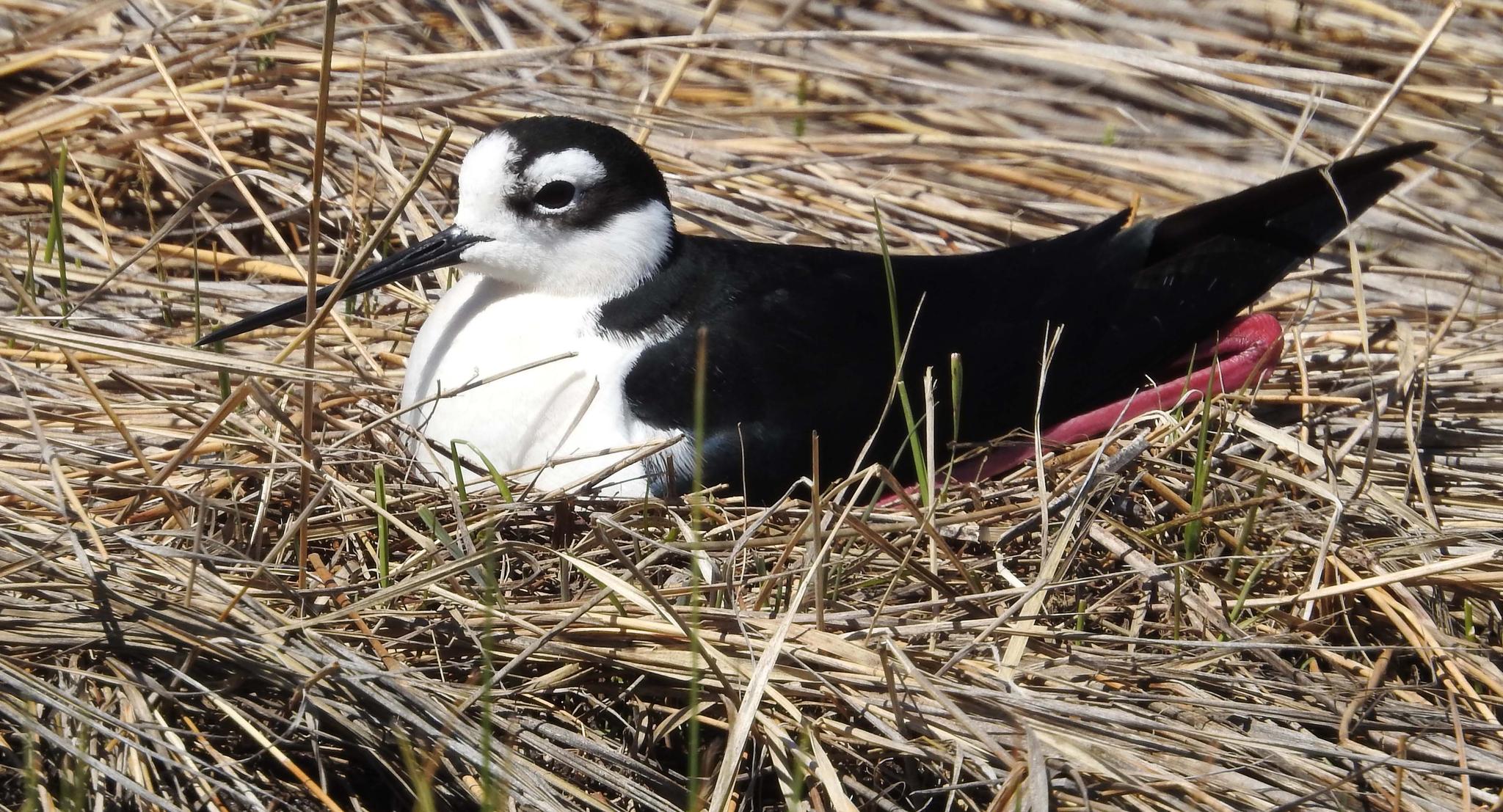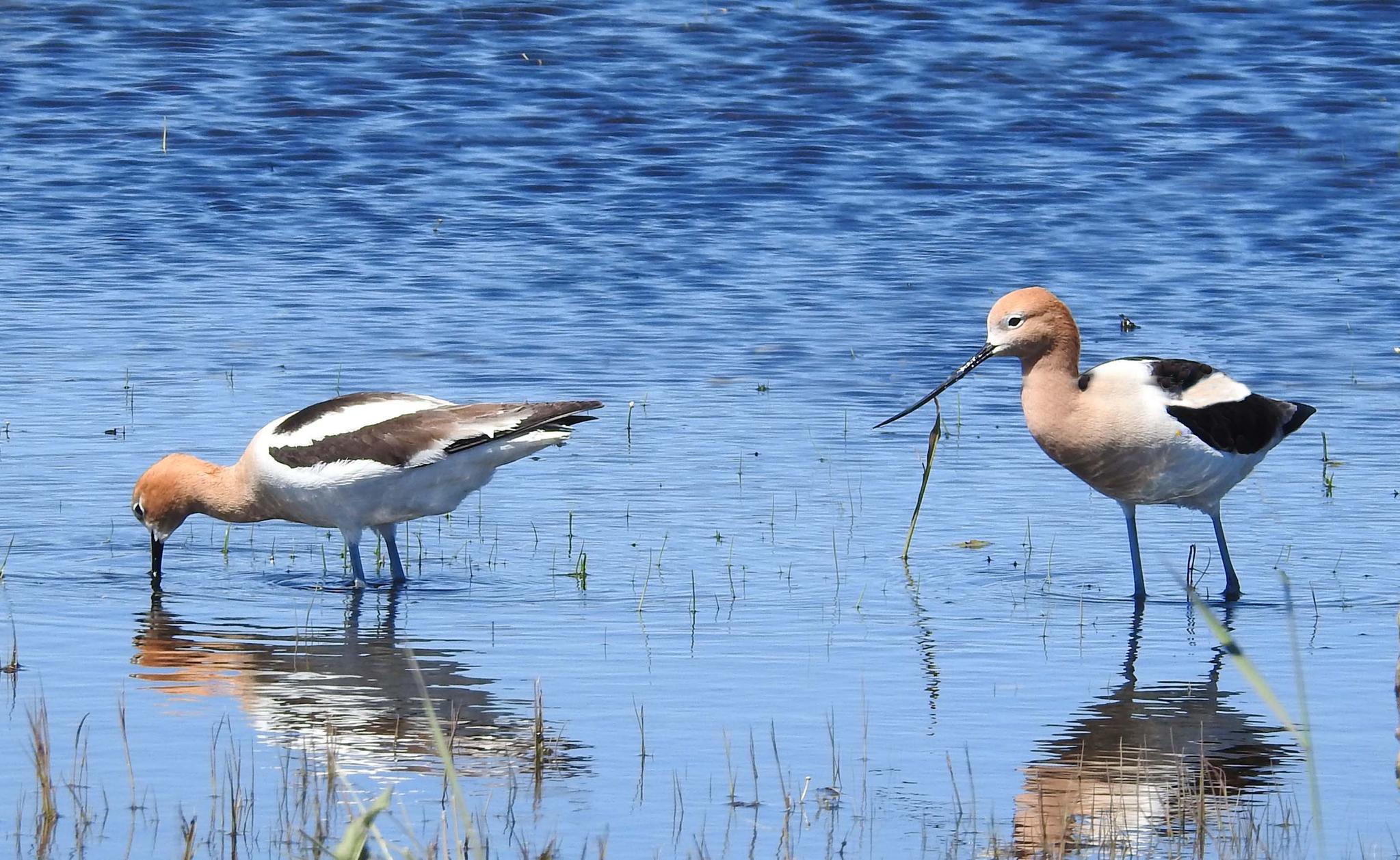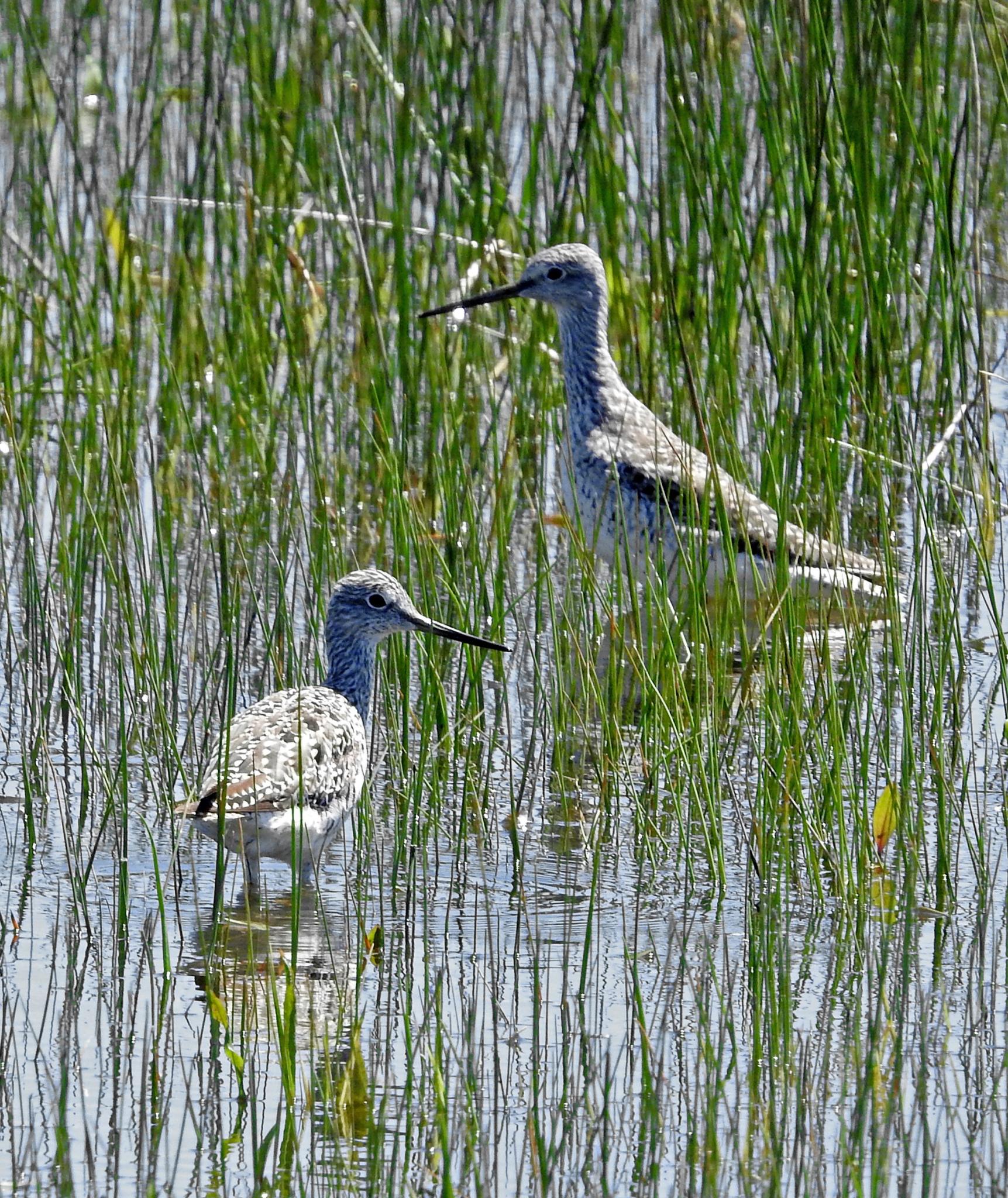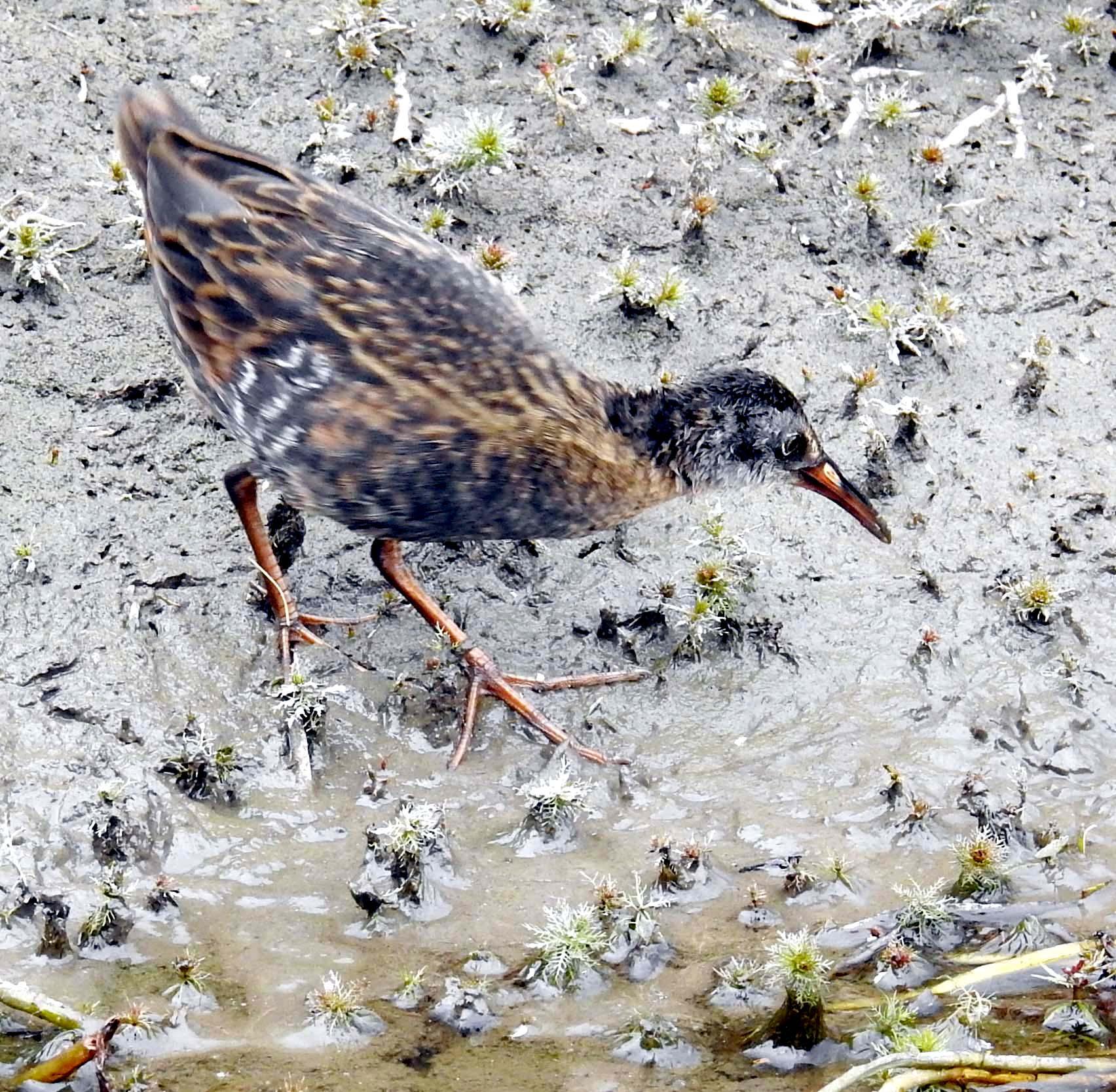
Black-necked Stilts (adult) — Himantopus mexicanus
I've never seen a Black-necked Stilt sitting down! This one might have been on a nest! I'll have to go back and see if it's still there next week!

American Avocet (adults) — ecurvirostra americana

Willets (young (?) & adult) — Tringa semipalpatus

Virginia Rail (juvenile) — Rallus limicola
Virginia Rails are uncommon and secretive and more commonly heard than seen. We saw an adult this week, but I wasn't able to get a photo. It had a bright orange bill and eyes! The photo above is of a juvenile, and was taken in August of 2020. It is the only other Virginia Rail I 've ever seen! Although usually solitary, they are monogamous during the breeding season and both male and female care for the young. The following information about Virginia Rails is from the Cornell website https://birdsoftheworld.org.
"The Virginia Rail is a secretive freshwater marsh bird that is more often heard than seen. A brief glimpse of a reddish bill and legs, banded black-and-white flanks, and a short, upturned tail is often all that is afforded observers. A habitat generalist, this species probes mudflats and shallow water with its long, slightly decurved bill searching for invertebrates, small fish, and the occasional seed. Vagrancy and generalist habits allow it to exploit a highly ephemeral niche. A laterally compressed body, flexible vertebrae, and modified feather tips in anterior regions of the head (to prevent feather wear) are adaptations for passing through dense marsh vegetation. Virginia Rails are agile on their feet and most often escape danger by running, but they may also dive and swim, using their wings to propel themselves underwater. Rails live in shallow fresh water wetlands with emergent vegetation, such as cattails, and feed on seeds and aquatic invertebrates. They are usually solitary. They prefer to run rather than fly, and migrate at night!"

Long-billed Dowitcher — Limnodromus scolopaceus
Your questions and comments are appreciated. Please feel free to email me at northyubanaturalist@gmail.com. Thanks!
Featured Articles

2025 Fourth of July Street Race Results Are In! →
July 9, 2025
Downieville’s annual 4th of July street races saw enthusiastic participation across all age groups.
Newsom Signs Housing and Development Streamlining Bills →
July 2, 2025
23-Year-Old Dies in Collision Near Grass Valley →
June 30, 2025
Tahoe National Forest Enters Stage 1 Fire Restrictions →
June 30, 2025
Sierra County Sheriff Recognized on Congressional Honor Roll →
June 25, 2025